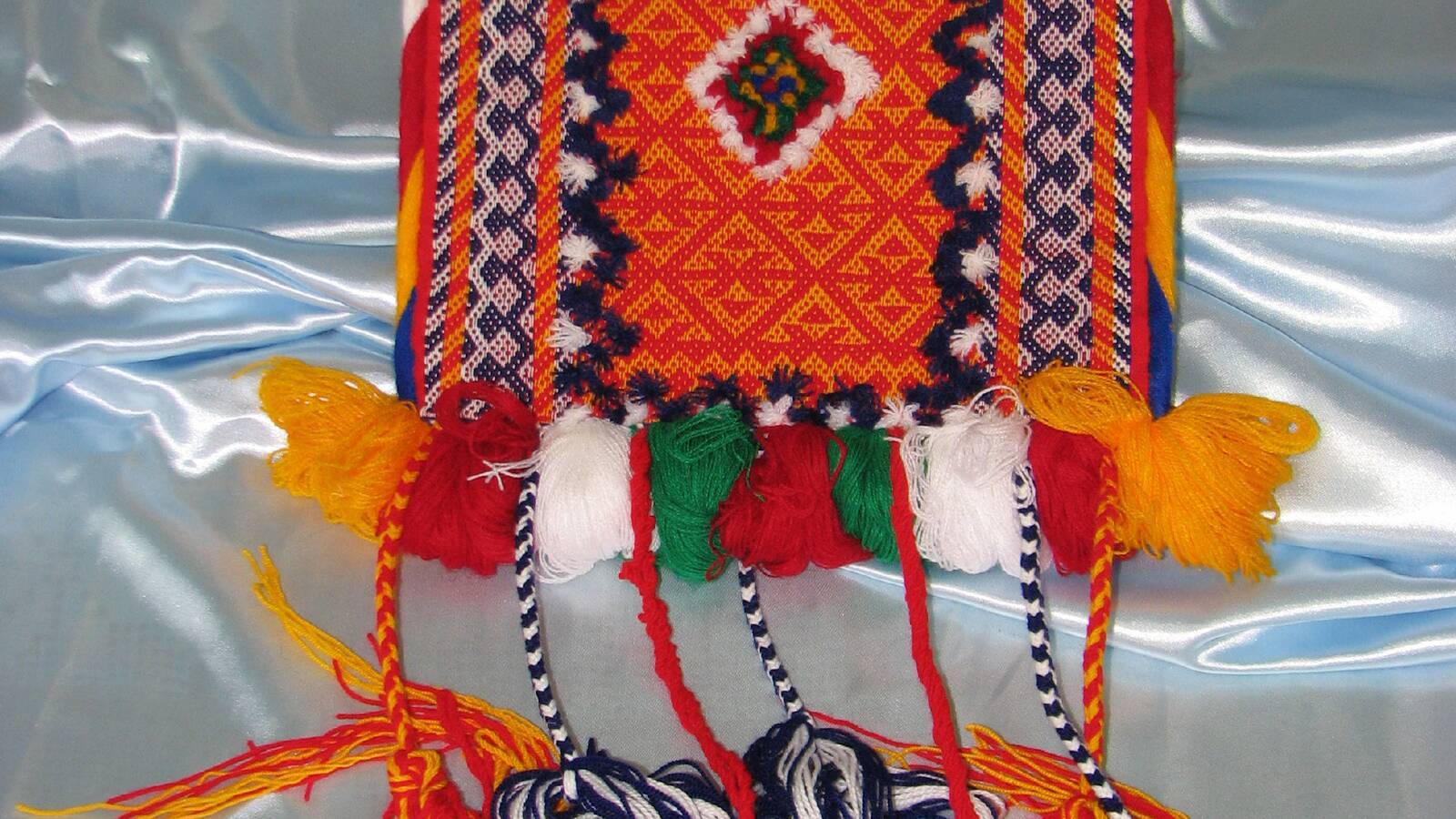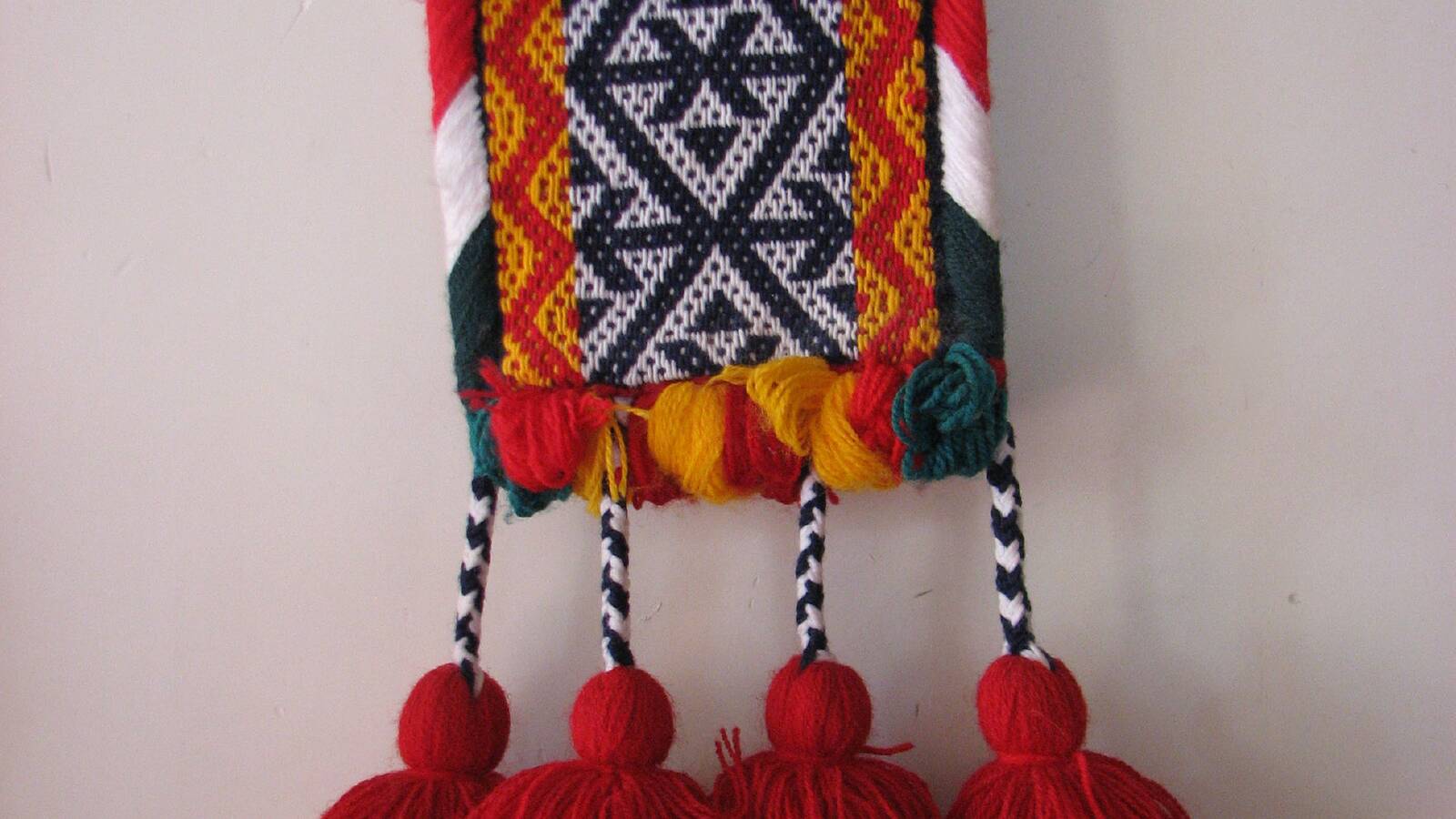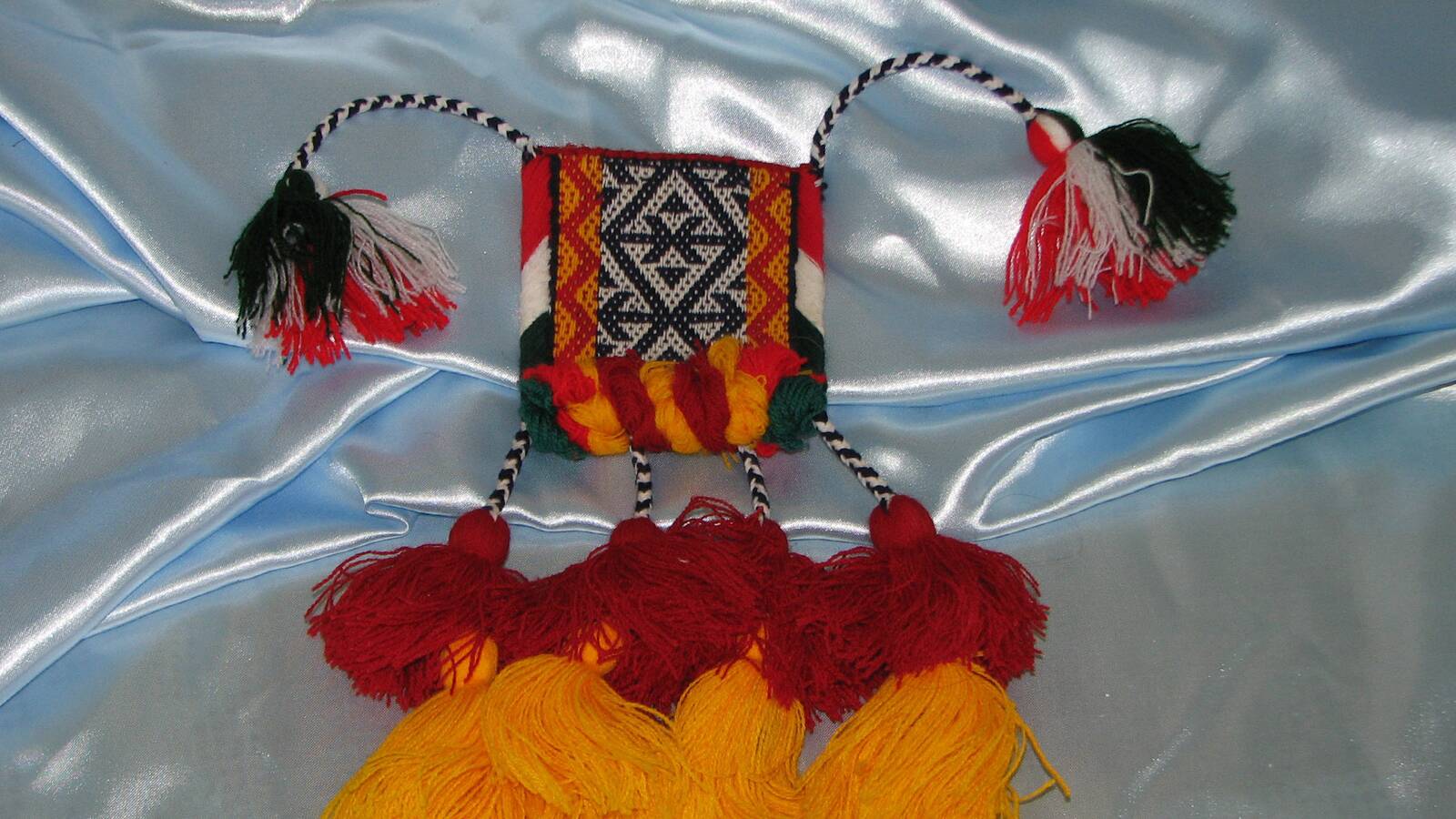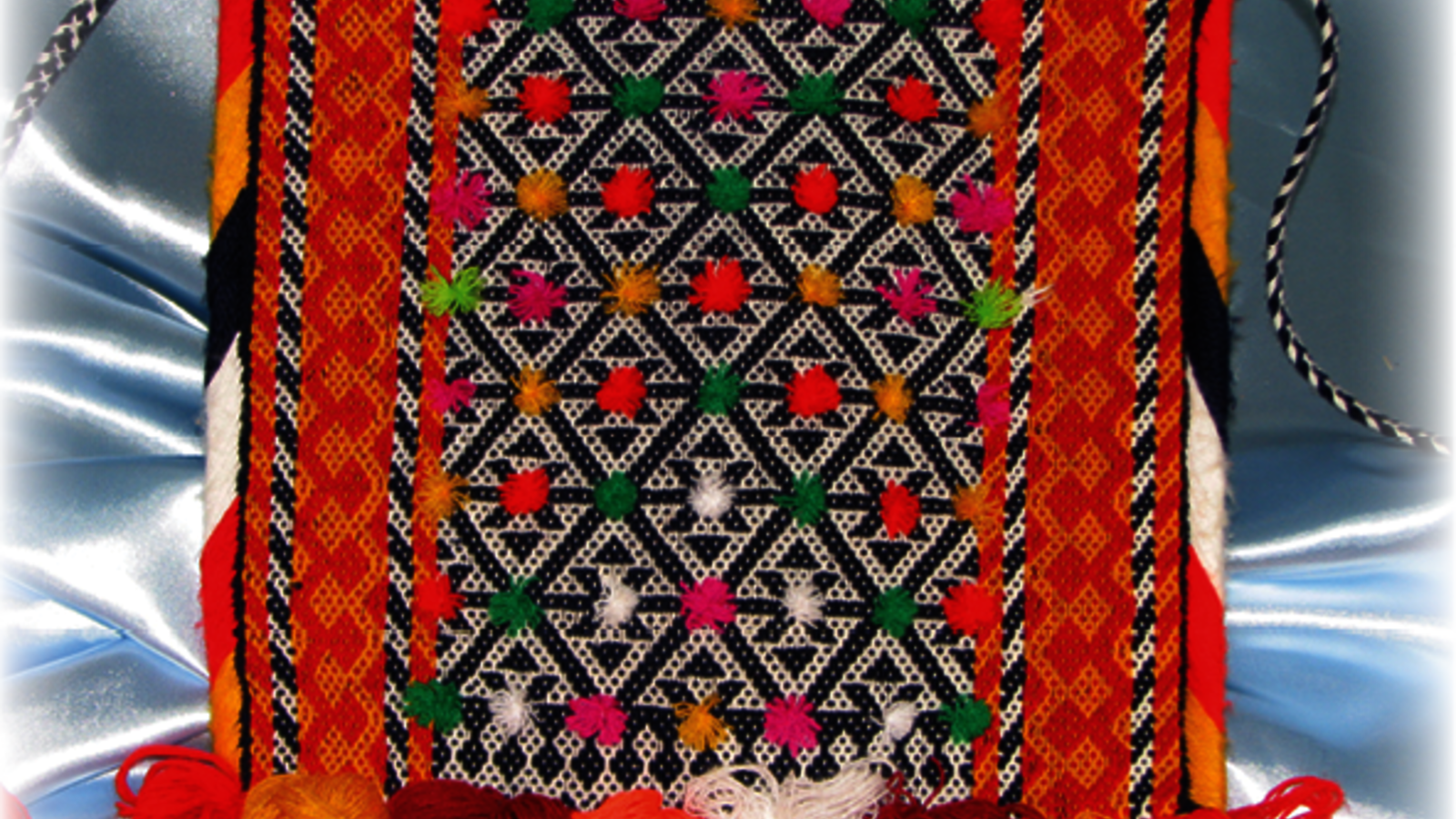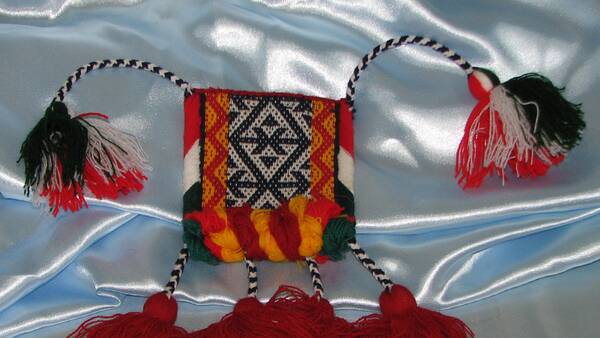
Chanteh Bafi of Fars
Chanteh or “Ayinehdan” is one of the handwoven products of nomad people of Fars province. Chanteh has been defined as “the knapsack of the dervish which are generally made of rugs and carpets and sewed in forms of sack. Then, leather pieces are sewed on them. They are hanged from neck and small objects are put in them”. In the terminology of carpets any small handworked weave, smaller than saddlebags, which does not have two compartments and is a single unit is Chanteh. The primary material of a Chanteh is completely like a carpet and their only differences are the sizes. These products are woven only by women and in fact, they look like a sack or pouch that is used to hold different objects nomadic people use in their daily lives. Chanteh is usually made from two pieces of a thirty in forty rectangular that are sewed to each other in three sides in the form of a pocket. There are two colorful pom poms on two sides of the bottom and they have a handle just like a bag. The handle is made of Chanteh itself and lets it to be hanged like a bag.
To weave a Chanteh, since it is very narrow, a loom is installed only when more than five pieces are to be weaved. A weaver can produce ten to twenty pieces of Chanteh with different designs on one set of loom. This weave has different methods of manufacturing. Methods of weaving Carpets, Kilims, Jajims, saddlebags and other weaves can be used to make a Chanteh. Both Persian and Turkish knots are used in Chanteh. The wraps and wefts are wool yarns. The wraps are usually white and wefts are dyed with natural pigments. They are used in colors such as red, golden, blue and green. They are weaved on horizontal looms. The diversity of motifs and patterns of Chanteh are high. But women concentrate on keeping the fundamental elements that represent a part of the ancient culture of this land. Amongst them are motifs that are rooted in the legendary beliefs and symbols of ancient times and are signs of the beginning of the prehistoric era. They can be found in pottery artifacts from 4th to 3rd millennium B.C. and some of them are inspired by reliefs of Achaemenid, Sassanid and early Islamic Era. Some of the motifs used in the Qashqai weaves are peacock feather, paisley, sun, goat, birds, eight petal flowers, zigzags, cross, Anemone and desert bushes.
